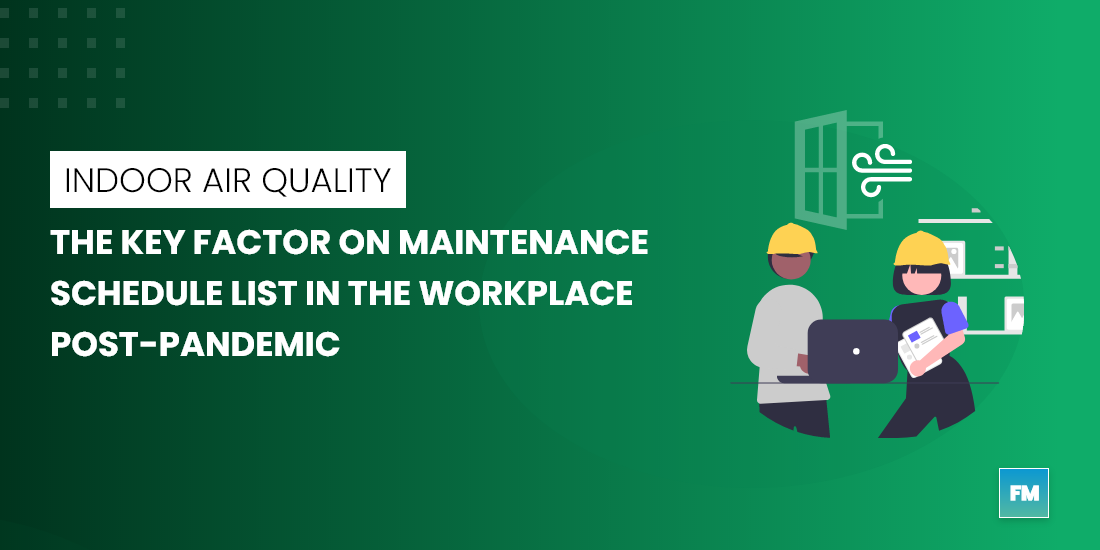Recently the US EPA (environmental protection agency) has updated the IAQ standards across commercial buildings and offices and highlighted the 3 important strategies to reduce the risk of spreading coronavirus.
- Source control: That is to prevent pollutions to enter the office premise by strict inspection and monitoring of individuals, incoming air inlets, goods and material supply. This is by far one of the easiest and cost-effective methods to safeguard facilities.
- Better Ventilation: Improving the ratio of fresh air/indoor air circulation in the facility. Also identifying and redesigning the AHU network for hot zones where colling and air circulation is not effective enough.
- Installing air cleaners: This can improve the filtration of pollutants and stop them from further circulation.
Ensuring the safety of the tenant is definitely one of the essential tasks for facility management teams; however, that shouldn’t become an excuse to neglect the energy efficiency or create a diversion from the energy intensity reduction targets.
Improving ventilation or installing high-quality air filters can significantly increase energy consumption but it can be controlled and monitored with the help of the right building automation solutions. According to verdantix report Global Corporate Survey 2020, There are multiple air quality sensors, automation hardware and Air quality analytics application are getting launched in the market with that devising the right strategy to control and monitor the indoor air quality is getting important.
What to track?
According to WELL Building Standards, carbon dioxide (CO2) and volatile organic compounds (VOCs) are two primary indicators of good indoor air quality. Besides improving work productivity and hygiene it’s also important to keep a check on both the indicators to improve the energy efficiency of the building. Therefore air quality monitoring is gaining traction nowadays.
How to track?
Among the must-have list of sensors, most of the smart building infrastructure already follows Temperature, humidity, occupancy and ambient light sensors. They provide basic data on HVAC controlling and other operations and mostly integrated with the Building management system.
There are few guidelines on designing a PCB to mount these sensors for optimum performance. Such as designing a PCB in such a way that it can take the temperature profile of the room and not the board or mounting structure. An ambient light sensor on the ceiling height will experience a different level of light to a person at a desk, so it is important to measure and adjust the lux levels during setup.
Tracking the CO2 and VOCs are a bit more difficult than the other type of sensors however three are two sensor technologies that are capable of picking up CO2. 1) Non-dispersive infrared (NDIR) technique. Which absorbs a particular wavelength of light and calculates the level of CO2 in it. 2) eCO2 sensor, This is a metal oxide (MOX) sensor and uses the principle that CO2 and VOCs exist together at a constant ratio inside typical buildings. It is an indirect measurement technique but is still valid for many applications.
Crosslink with other parameters
These sensor data can be clubbed with the occupancy and asset operations to control the CO2 levels and find out loopholes in the systems. The data collected by these smart detectors can then be used to adjust outside airflow in real-time for a more efficient operation.
There are other technologies that can be considered on a trial basis such as Ultraviolet C (UVC) lighting, which is used for the disinfection of surfaces and spaces or humidification control for maintaining indoor humidity levels.
Having all the right sensors data is not sufficient but the complementary analytics solutions to correlate it with the building changes is also equally important. The facility management team should thrive to explore such building analytics software and make them as a part of their service delivery model.
when IAQ is your priority, how are you strategizing to improvise it along with aligning to performance contracts?

Leave a Reply